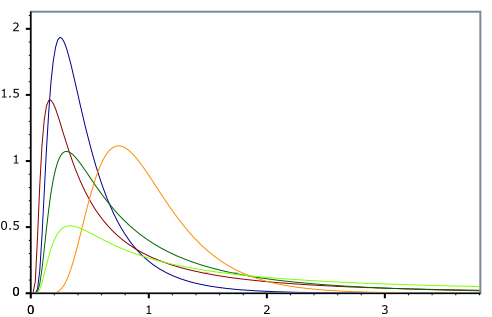Bizarre Integral
 Given that
∫
0
∞
2
π
x
3
θ
exp
(
−
2
μ
2
x
θ
(
x
−
μ
)
2
)
d
x
=
1
,
for
μ
>
0
and
θ
>
0
. Then determine
∫
0
∞
π
x
exp
(
1
−
4
x
−
x
1
)
d
x
.
Given that
∫
0
∞
2
π
x
3
θ
exp
(
−
2
μ
2
x
θ
(
x
−
μ
)
2
)
d
x
=
1
,
for
μ
>
0
and
θ
>
0
. Then determine
∫
0
∞
π
x
exp
(
1
−
4
x
−
x
1
)
d
x
.
The answer is 8.00.
This section requires Javascript.
You are seeing this because something didn't load right. We suggest you, (a) try
refreshing the page, (b) enabling javascript if it is disabled on your browser and,
finally, (c)
loading the
non-javascript version of this page
. We're sorry about the hassle.
1 solution
What about integration by parts and by analogy theta is 2 and mu is 2 hence the integral becomes x power 0.5 then it may be rewritten as x^2 times the dv and the integral rule is simply UV- integral of V d(x^2) Hence again integration of x timed dv I think this is direct technique
1-preform differentiation under the integral sign for f(x) with respect to Mu
integration { a x f(x)} + integration { b f(x)} = 0 where a and b are Constance .............> equ 1
therefore @ Theta and Mu = 2 the integration of {x f(x) }=2 .............> equ 2
2- again preform differentiation under the integral sign for equation 1 with respect to Mu
integration { l x^2 f(x)} +integration { m x f(x)} + integration { n f(x)} = 0 where l,m and n are Constance .............> equ 3
therefore @ Theta and Mu = 2 and by substituting from equation 2 in equation 3 the integration of {x^2 f(x) }=8 .